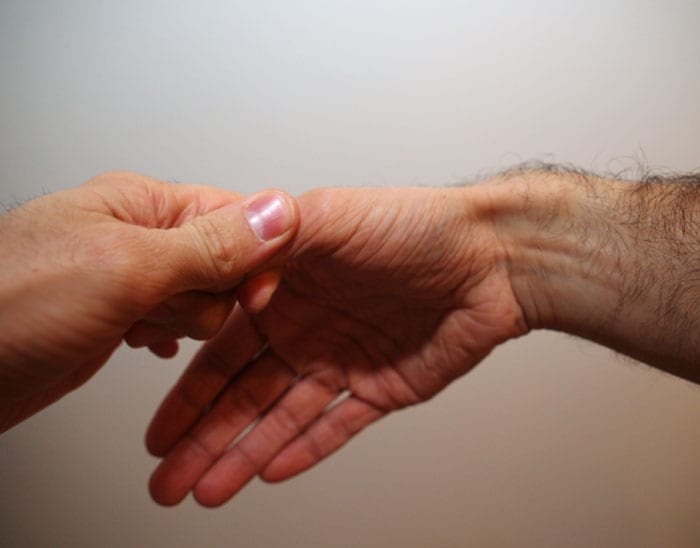
The Malady:
de Quervain’s Syndrome
Summary:
de Quervain’s Syndrome is an inflammation of the tendons attached to the thumb. While the cause is often unknown, there is often a correlation between this syndrome and repetitive motions of the thumb and hand. This causes pain and swelling around the joint of the thumb and wrist bones. The best way to rid yourself of this malady is to stop the aggravating activity, fix your ergonomics, and perform a series of light strengthening exercises.
The Facts:
de Quervain’s Syndrome, also known as “mommy thumb”, “Blackberry thumb”, and ‘washerwomen’s thumb”, is a condition most commonly found in women, and most prevalent in people with jobs that require repetitive use of their thumbs and wrists. The pain occurs in the sheath of the tendon, which is a thin layer of tissue that covers the part of the muscle that attaches to bone.
The Symptoms:
Patients will often complain of pain when they move their thumb up repeatedly, try to press something with the thumb, or try to grip an object. The pain usually increases with increased activity and decreases with rest.
What is Happening:
De Quervain’s is actually a tenosynovitis, meaning an inflammation of the sheaths of the tendons, in this case of the thumb muscles. As the sheaths become inflamed, they can become painful, stiff, and swollen. The specific tendons involved are of the extensor pollicis brevis and abductor pollicis longus muscles, which move the thumb towards the palm.
Why Is This Happening:
While there are mechanical causes that can contribute to the incidence of this malady, there is no evidence of any one cause. Although studies have yet to prove a link between activities and this pain, in my experience as a physical therapist I have noted many anecdotal instances of such things occurring. The pain will usually occur with any repetitive thumb motion, such as squeezing, gripping, or pressing. This repetitive use puts excessive pressure on the tendons of the thumb, which are not built to withstand being used for hours at a time every day.
Lifestyle Adjustments:
One important adjustment is to limit the amount of repetitive thumb motions you perform. One new cause of this malady is the repeated thumb motions that come from typing text messages daily. If you develop pain, try to use the “speak to type” function on your phone. It is also critical to maintain proper posture during work activities. If you have pain while working, try to rearrange your workspace so that other muscles can pick up the slack and your thumb can rest from the repeated strains.
Prevent It
Prevention is best achieved by limiting the activities that cause the pain.
1) Take breaks in between bursts of repetitive activities to give the tissues some rest
2) Adjust your grip on objects so the thumb tendons are not overused when lifting
3) Be aware of your hand and arm position when typing, both on your phone and laptop
Fix It
This condition is usually self-limiting, meaning, with rest, it will go away with no treatment. However, there are some isometric exercises that can be done to improve healing time. Strengthening of the hand muscles can be gradually initiated after pain is decreased and you are strong enough to move the muscles up and down. Here are some exercises to help get over DeQuervains Syndrome faster!
1) Putty squeeze – Squeeze a ball of putty as hard as you can without pain – 5 seconds, repeat 6 times twice a day
2) Finger spring: Place a large rubber band around the outside of your thumb and fingers. Open your fingers to stretch the rubber band, holding in place for 5 seconds. Do this 6 times twice per day.
3) Wrist extension – hold a weight or water bottle/can of soup in your hand. Hold for 5 seconds, then slowly lower down. Repeat 6 times twice per day.
